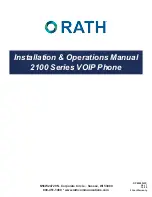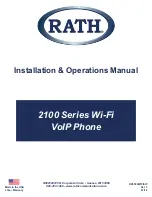
95
FCC & Industry Canada Regulatory Compliance
FCC & Industry Canada Regulatory Compliance
This device complies with Part 15 of the FCC Rules.
Operation is subject to the following two conditions: (1) this
device may not cause harmful interference, and (2) this
device must accept any interference received, including
interference that may cause undesired operation.
Your mobile device is a low power radio transmitter and
receiver. When it is ON, it receives and also sends out
radio frequency (RF) signals. In August 1996, the Federal
Communications Commission (FCC) adopted RF exposure
guidelines with safety levels for mobile devices. Those
guidelines are consistent with safety standards previously
set by both U.S. and international standards bodies:
American National Standard Institute (ANSI), National
Council of Radiation Protection and Measurements(NCRP),
and International Commission on Non-Ionizing Radiation
Protection (ICNRP). Those standards were based on
comprehensive and periodic evaluations of the relevant
scientific literature. The design of your Phone complies with
the FCC guidelines and applicable.
Statement according to FCC part 15.105
Statement according to FCC part 15.21
Modifications not expressly approved by this company
could void the user's authority to operate the equipment.
RF exposure FCC
For body worn operation, to maintain compliance with FCC
RF exposure guidelines, use only accessories that contain
no metallic components and provide a separation distance
NOTE
This equipment has been tested and found to comply with
the limits for a Class B digital device, pursuant to Part 15 of the FCC
Rules. These limits are designed to provide reasonable protection
against harmful interference in a residential installation. This
equipment generates, uses and can radiate radio frequency energy
and, if not installed and used in accordance with the instructions,
may cause harmful interference to radio communications. However,
there is no guarantee that interference will not occur in a particular
installation. If this equipment does cause harmful interference to
radio or television reception, which can be determined by turning
the equipment off and on, the user is encouraged to try to correct
the interference by one or more of the following measures:
•
Reorient or relocate the receiving antenna.
•
Increase the separation between the equipment and receiver.
•
Connect the equipment into an outlet on a circuit different from
that to which the receiver is connected.
•
Consult the dealer or an experienced radio/TV technician for
help.
070209_C3B_EN.indd 95
2007.2.9 2:38:47 PM
Summary of Contents for C3b
Page 1: ......






































